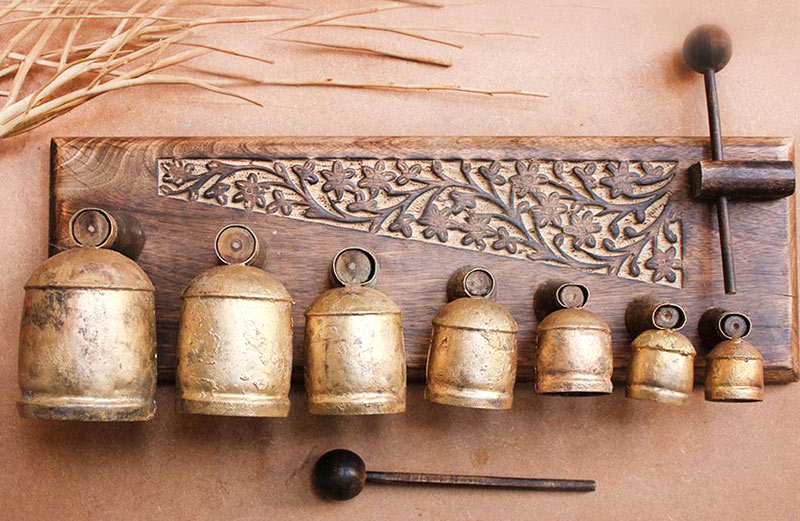Like any other craft, the craft of copper coated bells evolved from the need of the time and region. In earlier times, before the division of India and Pakistan, there used to be a constant movement of people between these regions. Live-stock was a major occupation in Kachchh. The Lohar community from Sindh, (now in Pakistan) saw the potential for their craft and brought the craft to the land of Kachchh.
As the metal used in these bells is mostly waste tin and iron, this creative industry is a good example of recycling with aesthetics and utility. A local economy for the bells still exists unlike in the other crafts as these bells are used for identifying cattle by the cattle rearing communities of the region.
Most of the copper bell artisans desire their next generation to take up the craft as an occupation. The reinforcing factors were it was the family trend, and also the business being profitable and in demand. The artisans are also of the view-point that, with fewer job opportunities and the volatile nature of it, the craft skills ensure that one need not sleep hungry.
Today, the bells are referred by their sizes that range from 0-13, with size 0 being the smallest and size 13 is the largest. Natural resources used for copper bell making are mud, the wood of ‘Prosophis Julifera’, and water. Mud is easily available at Zura village; and water is not required in much quantum; bell makers have reported scarcity of good quality wood as the charcoal makers destroy large portions of ‘Prosopis Julifera’.
The metal bell artisans have been sustained for the last 40 years through a business relationship with a major buyer from the US who buys these bells as Christmas merchandise. The sector is now at a crossroads where an up gradation in techniques, product diversification, and better returns are becoming a need for the artisans. The younger generation needs to see a future in order to continue their fathers’ occupations.



